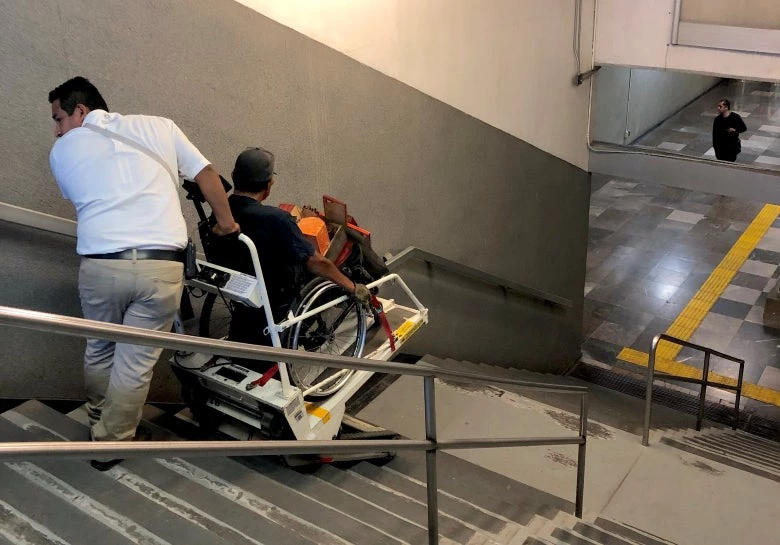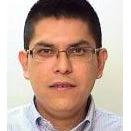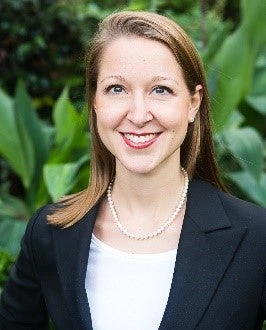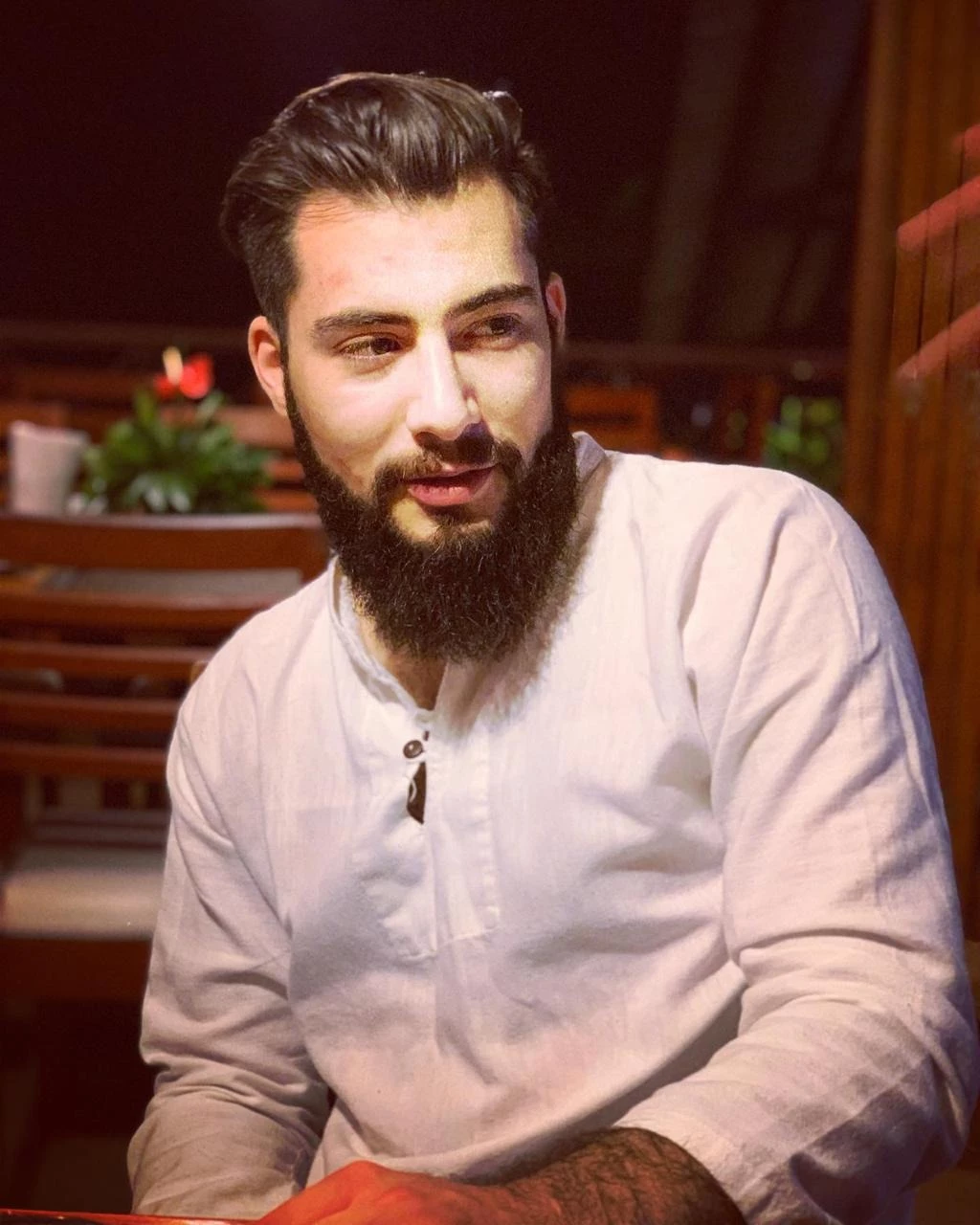 User pf SITEUR System in Guadalajara, Mexico
User pf SITEUR System in Guadalajara, Mexico
It is a fact. Around the world, people with disabilities face numerous barriers to accessing everyday services that those without disabilities take for granted. Mexico is not different in this regard: Mexicans with disabilities are 28% less likely to complete primary school, 62% less likely to finish a university education and 32% more likely to be unemployed .
Lack of inclusive, accessible public spaces is one of the most important barriers for people with disabilities. And public transportation sector is top on the list where disadvantages for people with disabilities are more visible.
In a national survey, 70.9% of Mexicans agreed that public transport did not have the minimum standards to be used by people with disabilities. Counting 6 million people (and growing!) as being disabled, inclusion in this area is a long-standing issue to be resolved in Mexico.
In recent decades, Mexico has undertaken great efforts to adopt laws and initiatives to ensure inclusion for people with disabilities: It was an early adopter of the Convention on the Rights of Persons with Disabilities (2008); enacted the General Law of Persons with Disabilities (2005) and the General Law for the Inclusion of Persons with Disabilities (2011); and created the National Council for Development and Inclusion of Persons with Disabilities.
In practice, however, many of these laws and initiatives have been unevenly adopted and loosely enforced. Instead, progress has accumulated through different international, national, local and private actors, all working towards the common cause of ensuring the full inclusion of persons with disabilities.
In 2010, the World Bank introduced the Urban Transport Transformation Program (UTTP), supporting public transport infrastructure in cities across Mexico, working in coordination with the National Program for Mass Transit (PROTRAM). One of our projects, in particular, demonstrated how different actors in development can unite to support the mainstreaming of disability-inclusivity into infrastructure design.
Guadalajara experience
Famous for mariachi music and tequila, Guadalajara is the second biggest Metropolitan Area in Mexico and home to 118,000 people with disabilities. Like many cities in the country, Guadalajara has been traditionally underserved by high-quality public transport and overserved by low-quality, privately-operated buses/microbuses, which provide few accessibility features for people with disabilities .
In 2015, the Government of Jalisco (the state where Guadalajara is located) decided to expand and upgrade Line 1 of the city’s Urban Electrical Train System (SITEUR in Spanish). Through the Urban Transport Transformation Program, the World Bank co-financed the acquisition of 12 trains for this upgrade.
Our involvement went beyond simple financing. In line with the Bank’s commitment on ensuring that urban mobility and rail projects are disability-inclusive (reinforced in 2018), we helped to ensure that the initiative included complimentary services to provide accessibility for all citizens.
We did not do it alone. For the Urban Transport Transformation Program, the Bank acted as a convener to create the enabling environment for disability-inclusive agendas and facilitated communication between various partners , encouraging local authorities to work with different organizations and adopt socially-inclusive perspectives.
Our team supported a dialogue about inclusive and safe transport development for SITEUR Line 1 and brought together, along the project cycle, multiple actors with similar development agendas, such as international and local donors (including other multilateral development banks) as well as local and international NGO’s working to support road safety and disability-inclusive transport initiatives.
The cumulative effect of all of this has been the steady adoption of comprehensive measures to support accessibility for people with disabilities into transport projects in Mexico. This is on full display in Guadalajara’s SITEUR Line 1 upgrade, where the needs of different disabilities are met as follows:
- Braille on each system information stands.
- Tactile pathways (grooved warning markers) at platforms.
- Improved automatic announcement systems.
- Elevators at stations without ground-level entrance.
- Leveled-access environment around stations.
- Motorized platforms for accessing stations with stairs.
- Employee assistance upon request.
Working together for an inclusive public transportation
SITEUR’s Line 1 upgrade was completed earlier this year and when we visited the city, we noticed several customers with mobility disabilities moving independently using the different access systems provided or using the support from SITEUR staff to access the facilities.
Since the upgrade, SITEUR has told us that the financing for Line 1 not only improved system capacity, but also the entire user travel experience. SITEUR Line-1 has registered a significant increase in the number of riders with disabilities and they are proud of this achievement. Furthermore, even with this increase, SITEUR reports that fewer people are requesting SITEUR assistance services since the upgrade, indicating that people with disabilities are now able to move more freely and without assistance.
Our experience demonstrates how the Bank can act as a convener to bring to life a social development perspective in infrastructure projects by encouraging the institutionalization of socially inclusive best practices and use its influence to align various actors with a stake in ensuring inclusive practices.
Going forward, the Environmental and Social Framework (ESF) offers even more opportunities for the Bank to act as a convener and for introducing disability-inclusive development practices: the ESF incorporates strong provisions to safeguard the interests of persons with disabilities and offers many entry points for the World Bank to enhance development opportunities and benefits for all.




Join the Conversation